
Matthew Kirk
@microbialmatt.bsky.social
Professor of geology at #KState | groundwater, streams, microbes, geochemistry, critical zone science, DEI | #firstgen | he/him
Pinned
Matthew Kirk
@microbialmatt.bsky.social
· Sep 20
Microbes are collectively one of the biggest forces shaping Earth, and yet undergraduate #geology students typically receive little training in microbiology. My new open access textbook seeks to help. “Microbiology for Earth Scientists” is freely available here newprairiepress.org/ebooks/53/
What the well sees when a team of students collects samples :)
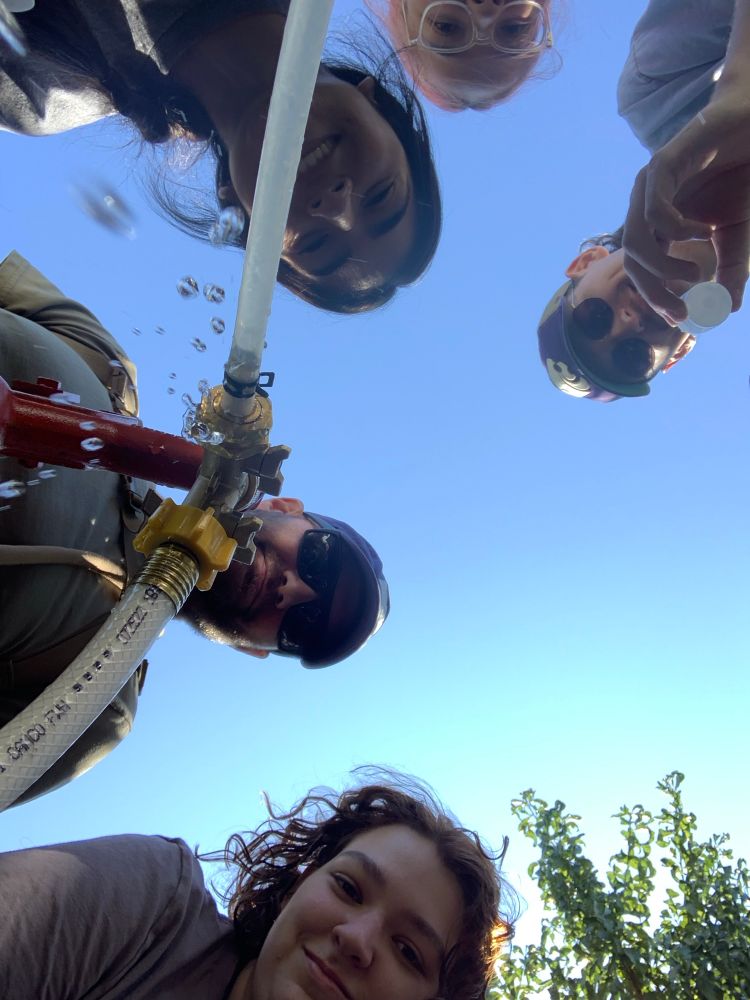
October 5, 2025 at 12:49 PM
What the well sees when a team of students collects samples :)
It has now been 2 years since my book, Microbiology for Earth Scientists, was published online. It has been downloaded in over a hundred countries worldwide! Very happy to see that it is being found and hopefully serving as a helpful resource! #openaccess
Microbes are collectively one of the biggest forces shaping Earth, and yet undergraduate #geology students typically receive little training in microbiology. My new open access textbook seeks to help. “Microbiology for Earth Scientists” is freely available here newprairiepress.org/ebooks/53/
October 2, 2025 at 1:01 PM
It has now been 2 years since my book, Microbiology for Earth Scientists, was published online. It has been downloaded in over a hundred countries worldwide! Very happy to see that it is being found and hopefully serving as a helpful resource! #openaccess
We're searching for a Lab Director to run the new #Kansas Water Institute water quality lab. Lots of momentum here at Kansas State University for #water research and we're putting together a pretty awesome lab. Details here - careers.k-state.edu/jobs/water-q...
Water Quality Laboratory Director - Manhattan, Kansas, United States
About This Role
The Water Quality Laboratory Director is responsible for overseeing the operations, research activities, and strategic direction of the water quality laboratory. This role involves man...
careers.k-state.edu
October 2, 2025 at 12:57 PM
We're searching for a Lab Director to run the new #Kansas Water Institute water quality lab. Lots of momentum here at Kansas State University for #water research and we're putting together a pretty awesome lab. Details here - careers.k-state.edu/jobs/water-q...
"The intensification of soil drying, combined with larger storms in mesic grasslands, is likely to have consequences for deep carbon storage and export and groundwater recharge in woody-encroached grasslands."
link.springer.com/article/10.1...
link.springer.com/article/10.1...

Woody Encroachment Intensifies Deep Soil Drying at Daily, Seasonal, and Decadal Scales - Ecosystems
The conversion of grasslands to shrublands, known as woody encroachment, has increased vegetation water use, particularly in mesic systems. However, declines in soil moisture due to woody encroachment have not been extensively explored. This study examines the impacts of woody encroachment on the depth and degree of soil drying in a mesic tallgrass prairie in Kansas, USA. We compared soil drying beneath roughleaf dogwood (Cornus drummondii) and non-encroached tallgrass prairie using half-hourly measurements of soil moisture from 2021 to 2024 (event scale), electrical resistivity in June and October of 2022 (seasonal scale), and neutron probe measurements collected monthly between 1984 and 2021(decadal scale). Across all time scales, we found increased soil drying beneath shrubs compared to grasses, particularly in deeper layers. Soil moisture declined up to 20% more at 60 cm depth beneath shrubs compared to grasses after individual storm events, whereas declines at 15 cm were similar beneath shrubs and grasses. Electrical resistivity imaging suggested double the depth and degree of seasonal soil drying beneath shrubs compared to grasses. Over nearly four decades, woody-encroached catchments experienced a greater degree of soil drying than grass-dominated catchments, especially at depths below 1 m. The intensification of soil drying, combined with larger storms in mesic grasslands, is likely to have consequences for deep carbon storage and export and for groundwater recharge in woody-encroached grasslands.
link.springer.com
September 30, 2025 at 2:28 PM
"The intensification of soil drying, combined with larger storms in mesic grasslands, is likely to have consequences for deep carbon storage and export and groundwater recharge in woody-encroached grasslands."
link.springer.com/article/10.1...
link.springer.com/article/10.1...
Thawing permafrost is going to be a problem in more ways than one.
www.sciencedaily.com/releases/202...
www.sciencedaily.com/releases/202...

Why Alaska’s salmon streams are suddenly bleeding orange
Warming Arctic permafrost is unlocking toxic metals, turning Alaska’s once-clear rivers into orange, acid-laced streams. The shift, eerily similar to mine pollution but entirely natural, threatens fis...
www.sciencedaily.com
September 29, 2025 at 4:18 PM
Thawing permafrost is going to be a problem in more ways than one.
www.sciencedaily.com/releases/202...
www.sciencedaily.com/releases/202...
Reposted by Matthew Kirk
Hydrology Paper of the Day @lireactivewater.bsky.social on how hydrological processes influence spatial patterns of dissolved organic carbon: numerical experiments with the catchment-scale BioRT-HBV model indicating geological and biogeochemical cycles and controls; and the power-law CQ relationship
What mechanisms underlie near-universal export patterns of dissolved carbon from land to rivers?
Reactions at different depths regulate their directionality (+ or -); subsurface flow paths control strength
Congrats to Dr. Bryn Stewart! rubyfu.caltech.edu/people/bryn-...
doi.org/10.1029/2024...
Reactions at different depths regulate their directionality (+ or -); subsurface flow paths control strength
Congrats to Dr. Bryn Stewart! rubyfu.caltech.edu/people/bryn-...
doi.org/10.1029/2024...


August 30, 2025 at 2:38 AM
Hydrology Paper of the Day @lireactivewater.bsky.social on how hydrological processes influence spatial patterns of dissolved organic carbon: numerical experiments with the catchment-scale BioRT-HBV model indicating geological and biogeochemical cycles and controls; and the power-law CQ relationship
Reposted by Matthew Kirk
a thought i have reading @clintsmithiii.bsky.social’s wonderful piece is that one reason the administration wants to erase any mention of the worst of our past is because it is intent on recapitulating those atrocities www.theatlantic.com/ideas/archiv...

Actually, Slavery Was Very Bad
The president’s latest criticism of museums is a thinly veiled attempt to erase Black history.
www.theatlantic.com
August 22, 2025 at 5:00 PM
a thought i have reading @clintsmithiii.bsky.social’s wonderful piece is that one reason the administration wants to erase any mention of the worst of our past is because it is intent on recapitulating those atrocities www.theatlantic.com/ideas/archiv...
Great work by Zak Ratajczak and his team who use remote sensing and AI to quantify changes in plant communities in a grassland experiencing woody encroachment
www.kcur.org/news/2025-08...
www.kcur.org/news/2025-08...

Kansas scientists put AI to work in the fight to save the Flint Hills tallgrass prairie
Trees and shrubs are invading prairies, hurting the wildlife and making it harder to ranch. Yet it's hard to know the full extent of the problem, so Kansas State University found a way to map it out o...
www.kcur.org
August 22, 2025 at 5:42 PM
Great work by Zak Ratajczak and his team who use remote sensing and AI to quantify changes in plant communities in a grassland experiencing woody encroachment
www.kcur.org/news/2025-08...
www.kcur.org/news/2025-08...
A Data‐Driven Simplified Nernst Equation for Estimating Reduction Potentials in #Groundwater from pH and Temperature - Bowman - Groundwater - Wiley Online Library ngwa.onlinelibrary.wiley.com/doi/full/10....
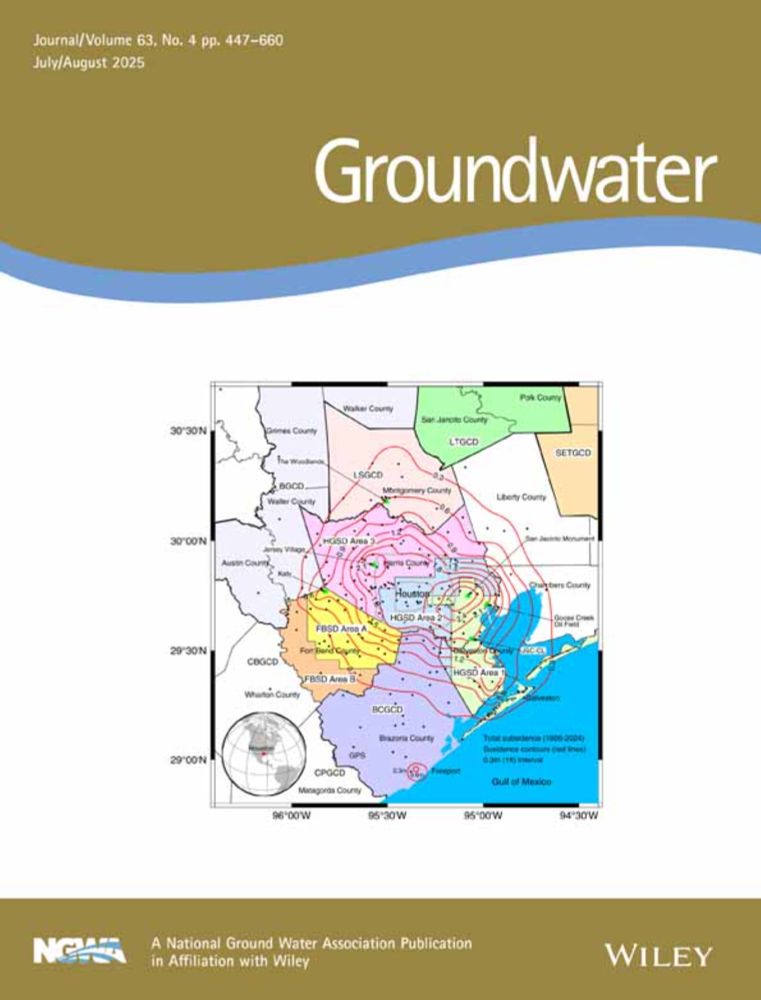
A Data‐Driven Simplified Nernst Equation for Estimating Reduction Potentials in Groundwater from pH and Temperature
Reduction potentials of redox couples are fundamental for understanding subsurface geochemistry and guiding water resource exploration and management. Reduction potentials are routinely calculated wi...
ngwa.onlinelibrary.wiley.com
August 11, 2025 at 2:21 PM
A Data‐Driven Simplified Nernst Equation for Estimating Reduction Potentials in #Groundwater from pH and Temperature - Bowman - Groundwater - Wiley Online Library ngwa.onlinelibrary.wiley.com/doi/full/10....
Exploring Energy Conservation in Sulphate‐Dependent Anaerobic Methane‐Oxidising Consortia Through Metabolic Modelling - Bowman - 2025 - Environmental Microbiology - Wiley Online Library enviromicro-journals.onlinelibrary.wiley.com/doi/full/10....
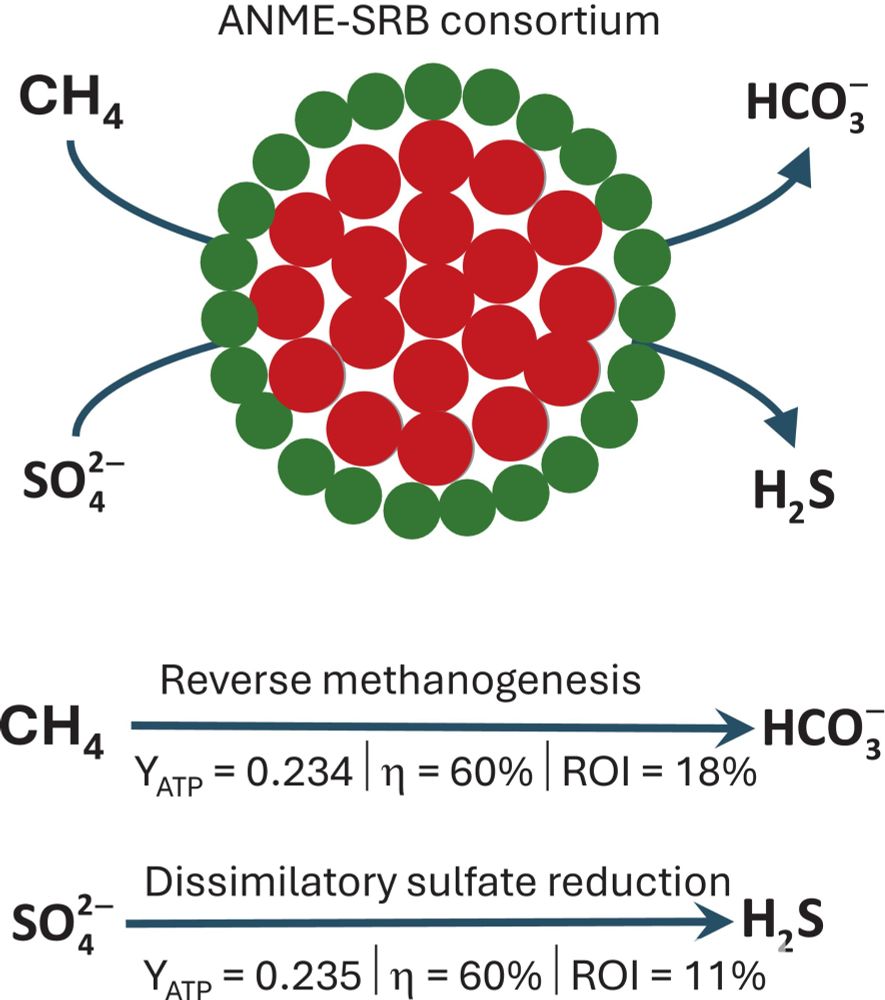
Exploring Energy Conservation in Sulphate‐Dependent Anaerobic Methane‐Oxidising Consortia Through Metabolic Modelling
This study presents a metabolic model to quantify energy conservation in sulphate-dependent anaerobic methane oxidation. Results reveal that anaerobic methanotrophic archaea and sulphate-reducing bac...
enviromicro-journals.onlinelibrary.wiley.com
August 11, 2025 at 2:20 PM
Exploring Energy Conservation in Sulphate‐Dependent Anaerobic Methane‐Oxidising Consortia Through Metabolic Modelling - Bowman - 2025 - Environmental Microbiology - Wiley Online Library enviromicro-journals.onlinelibrary.wiley.com/doi/full/10....
Reposted by Matthew Kirk
Motherfucking wind farms…
July 30, 2025 at 5:02 PM
Motherfucking wind farms…
Important findings related to groundwater depletion and also some great sci art!
www.propublica.org/article/wate...
www.propublica.org/article/wate...
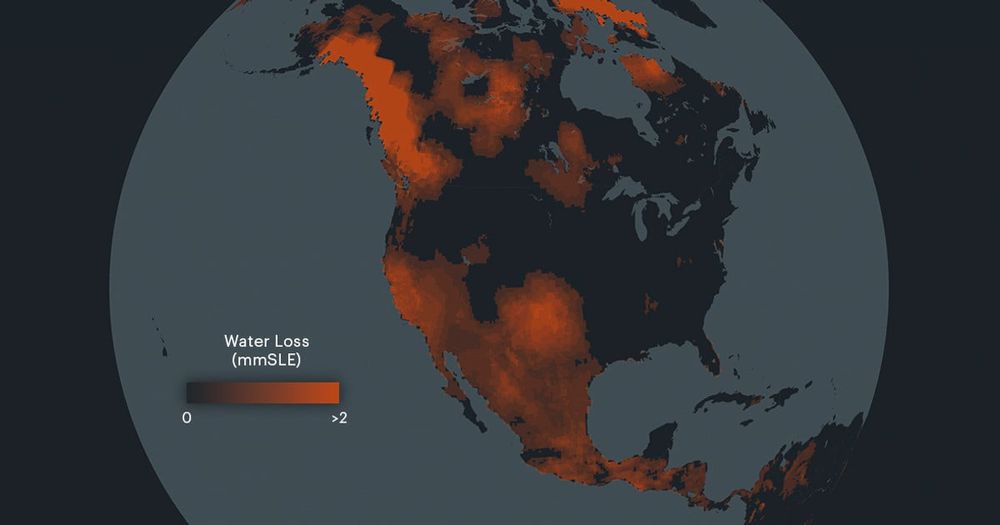
“Staggering” Water Loss Driven by Groundwater Mining Poses Global Threat
A new study finds that freshwater resources are rapidly disappearing, creating arid “mega” regions and causing sea levels to rise.
www.propublica.org
July 25, 2025 at 9:54 PM
Important findings related to groundwater depletion and also some great sci art!
www.propublica.org/article/wate...
www.propublica.org/article/wate...
Our first black swallowtail butterfly of summer emerged this morning! Several more on the way soon.

July 22, 2025 at 10:32 PM
Our first black swallowtail butterfly of summer emerged this morning! Several more on the way soon.
An uplifting story about the Kansas River from the Up from Dust podcast: Kayakers vs. river pollution
July 2, 2025 at 11:07 PM
An uplifting story about the Kansas River from the Up from Dust podcast: Kayakers vs. river pollution
Groundwater raining down on the High Plains
June 10, 2025 at 10:09 PM
Groundwater raining down on the High Plains
Groundwater sampling in south-central Kansas this week. Nearly half of the wells we have sampled in this part of the High Plains Aquifer have high nitrate levels.
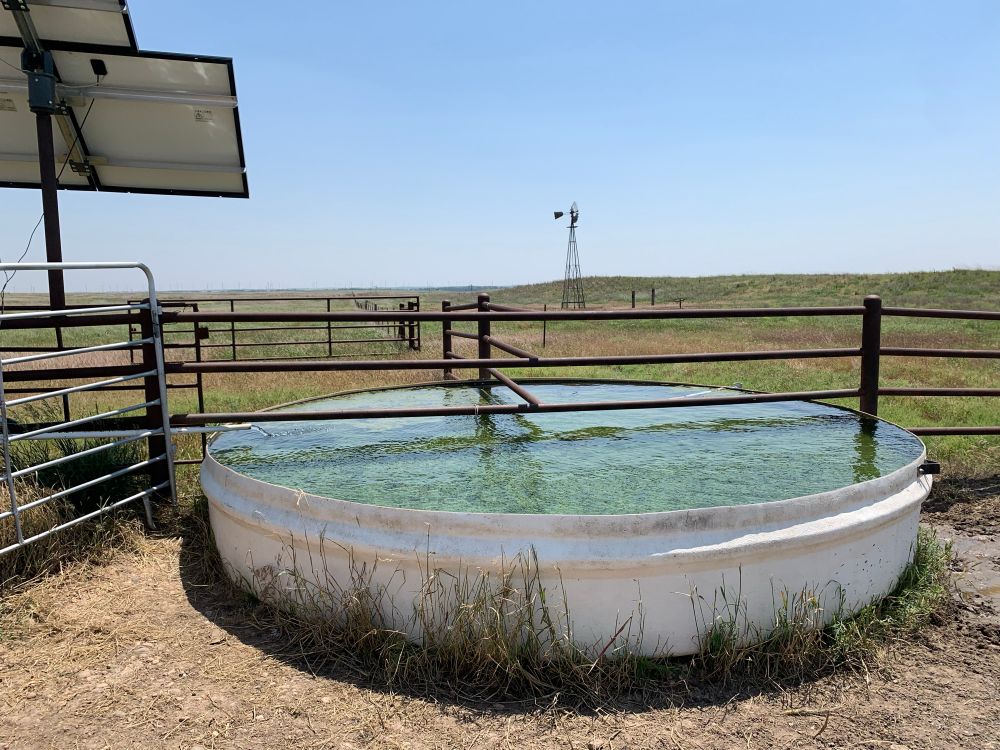


June 10, 2025 at 2:49 AM
Groundwater sampling in south-central Kansas this week. Nearly half of the wells we have sampled in this part of the High Plains Aquifer have high nitrate levels.
Reposted by Matthew Kirk
Hydrology Paper of the Day @danielepenna.bsky.social on how preferential flow in a Mediterranean catchment is affected by antecedent soil moisture and soil properties: random forest models for classification of hydrological responses and preferential flow event identification from soil moisture.
New field evidence on #preferential #flow on #forested #hillslopes at Re della Pietra #catchment. Thank you @quercusilex92.bsky.social @segura-lab.bsky.social @ecohydrologylab.bsky.social and other no-bluesky coauthors.
authors.elsevier.com/c/1l6Vj52cui...
danielepenna.wixsite.com/redellapietra
authors.elsevier.com/c/1l6Vj52cui...
danielepenna.wixsite.com/redellapietra
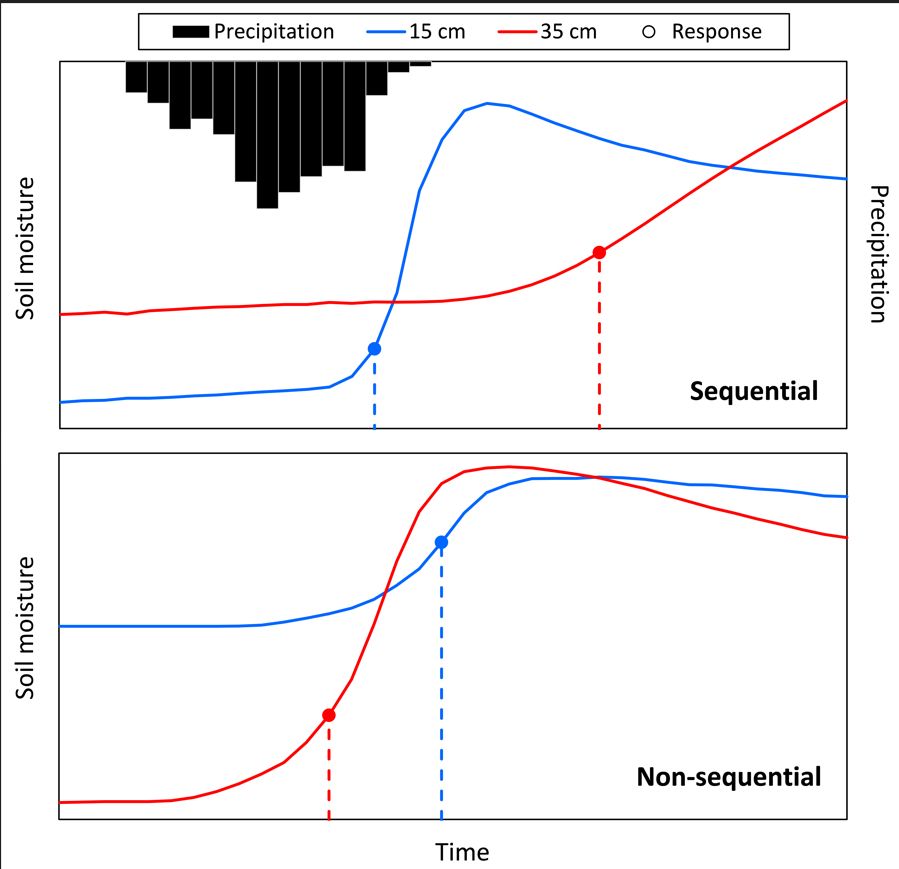
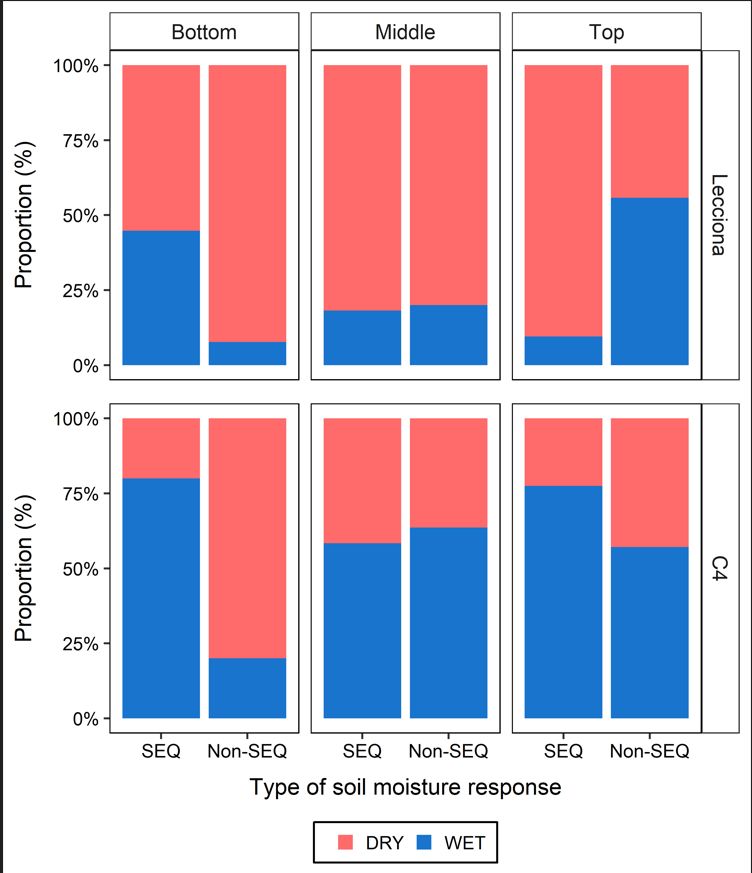
May 28, 2025 at 4:42 AM
Hydrology Paper of the Day @danielepenna.bsky.social on how preferential flow in a Mediterranean catchment is affected by antecedent soil moisture and soil properties: random forest models for classification of hydrological responses and preferential flow event identification from soil moisture.
Took a walk down memory lane and visited the woods I played as a kid in central Illinois. It’s a steep little valley cutting through Pennsylvanian cyclothems. Lots of stinky mud and springs. I suspect this place helped set me on my path to become a geoscientist.

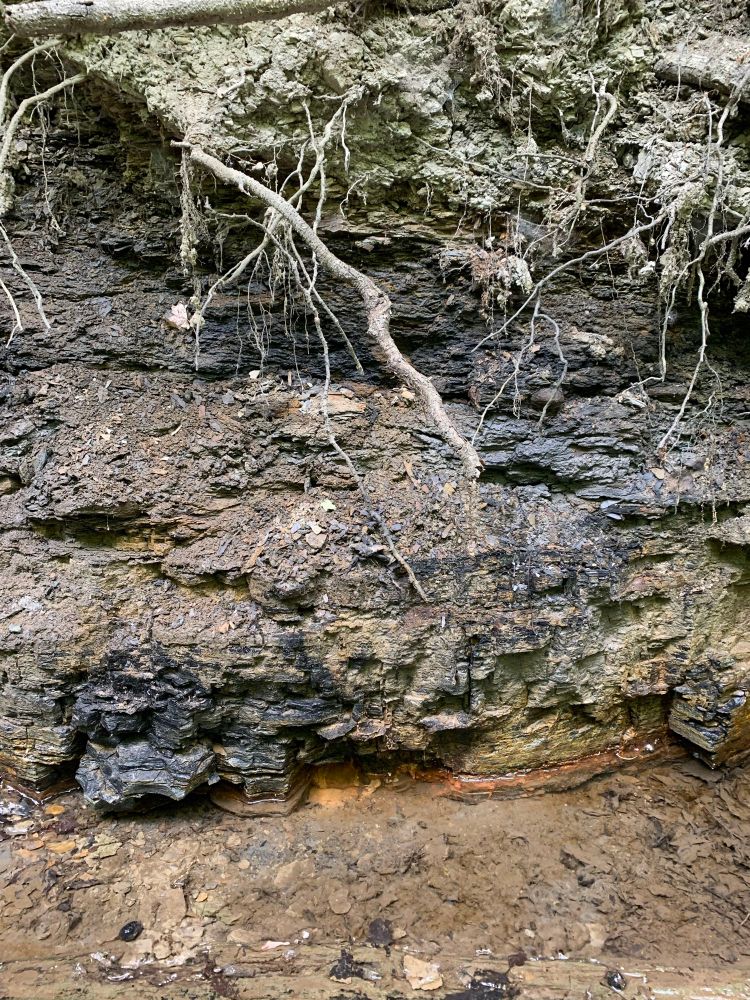
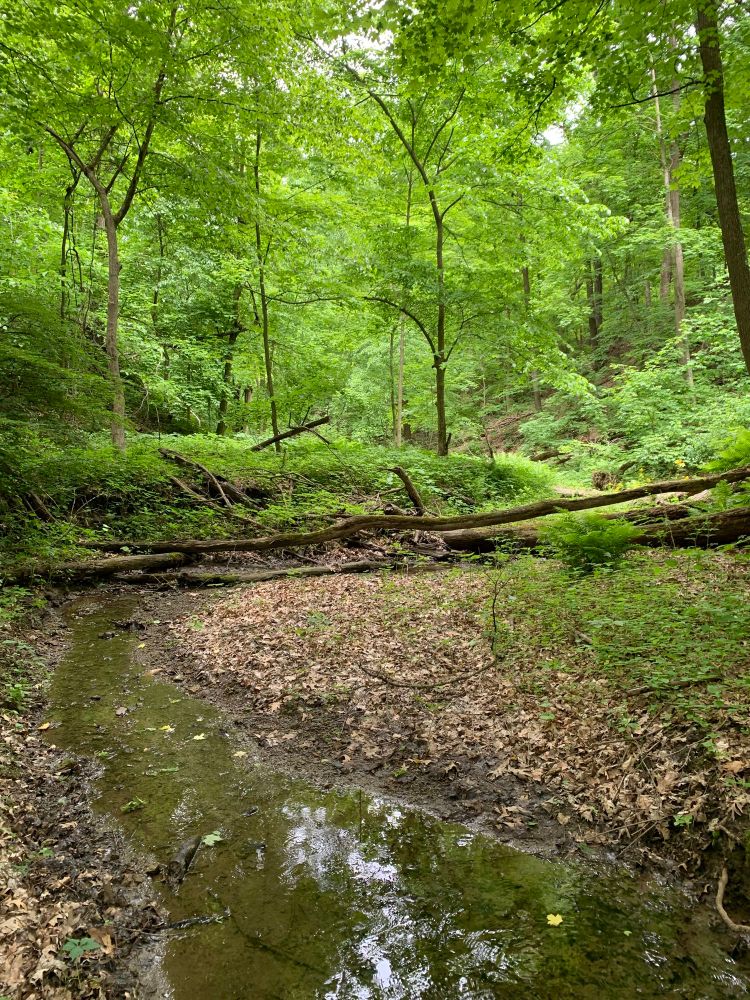
May 25, 2025 at 7:05 PM
Took a walk down memory lane and visited the woods I played as a kid in central Illinois. It’s a steep little valley cutting through Pennsylvanian cyclothems. Lots of stinky mud and springs. I suspect this place helped set me on my path to become a geoscientist.
End of semester gift from a couple of students :)
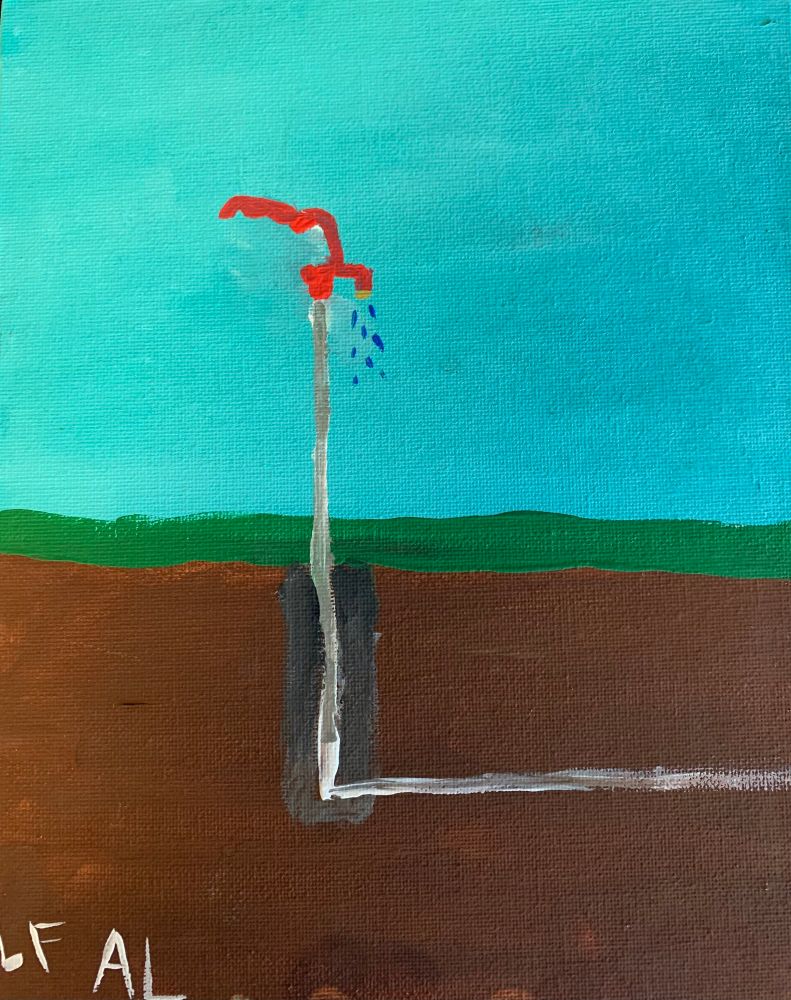
May 15, 2025 at 8:49 PM
End of semester gift from a couple of students :)
Reposted by Matthew Kirk
Hydrology Paper of the Day @agu.org on how topography is related to hydrology: a historical perspective; climate, precipitation, energy fluxes and exchange in the atmospheric boundary layer; biogeochemical cycles and vegetation; topography, gradients, and groundwater; and future research directions.
The relationship between topography & the terrestrial water cycle has been documented for thousands of years, yet there is still much to learn about Earth’s complex dynamics–both above, at, & below the surface.🏔️🌧️
🔗 Learn more in @eos.org : buff.ly/y6r3yAr
#AGUPubs @reviewsgeophysics.bsky.social
🔗 Learn more in @eos.org : buff.ly/y6r3yAr
#AGUPubs @reviewsgeophysics.bsky.social

Topography and the Terrestrial Water Cycle - Eos
The relationship between topography and the terrestrial water cycle has been documented for thousands of years, yet there is still much to learn about Earth’s complex dynamics – both above, at, and…
buff.ly
May 15, 2025 at 3:11 AM
Hydrology Paper of the Day @agu.org on how topography is related to hydrology: a historical perspective; climate, precipitation, energy fluxes and exchange in the atmospheric boundary layer; biogeochemical cycles and vegetation; topography, gradients, and groundwater; and future research directions.
The bedrock here in the Flint Hills consists of alternating layers of limestone and mudrock, which leads to lots of little waterfalls and springs dotting the landscape.
May 10, 2025 at 5:16 PM
The bedrock here in the Flint Hills consists of alternating layers of limestone and mudrock, which leads to lots of little waterfalls and springs dotting the landscape.
Reposted by Matthew Kirk
This aside, however, I talked to a rotator this week and I want to convey that it's essential that you – the PI – keep doing your science; including writing and submitting proposals (whatever that looks like). This is a case where doing your job competently is actual resistance...
Sometimes reorg is needed as fields evolve. That should be in response to, support of, and with the input of the scientific communities NSF serves. This isn't that... this is chaos.
This shameful dismantling of NSF will materially affect the nation's economy, health, national security, and environment. The NSF spokesperson didn't go on the record with their name because they know it's wrong. A coward. www.science.org/content/arti...
May 9, 2025 at 1:50 AM
This aside, however, I talked to a rotator this week and I want to convey that it's essential that you – the PI – keep doing your science; including writing and submitting proposals (whatever that looks like). This is a case where doing your job competently is actual resistance...
Reposted by Matthew Kirk
The International Association of Hydrogeologists is here!! Welcome to the blue sky 💙
bsky.app/profile/iahg...
bsky.app/profile/iahg...
bsky.app
May 8, 2025 at 8:38 AM
The International Association of Hydrogeologists is here!! Welcome to the blue sky 💙
bsky.app/profile/iahg...
bsky.app/profile/iahg...
Yes please - Less lawn, more wildlife! Here’s how to ditch turf for native plants:
one.npr.org/i/fis-123986...
one.npr.org/i/fis-123986...
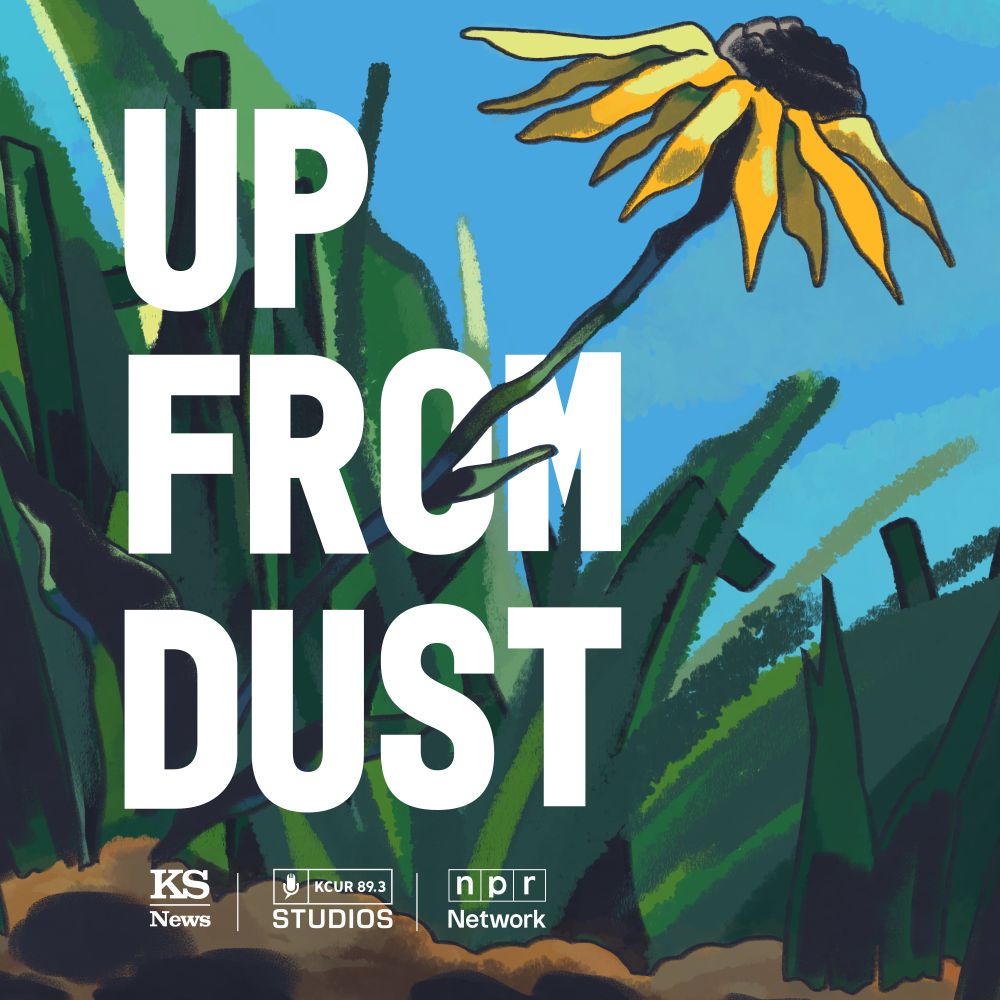
🔊 Listen Now: Less lawn, more wildlife! Here’s how to ditch turf for native plants
Up From Dust from KCUR 89.3 on NPR One | 24:20
one.npr.org
May 7, 2025 at 12:20 AM
Yes please - Less lawn, more wildlife! Here’s how to ditch turf for native plants:
one.npr.org/i/fis-123986...
one.npr.org/i/fis-123986...

